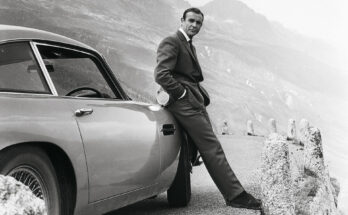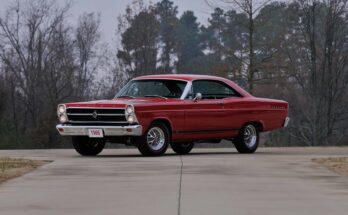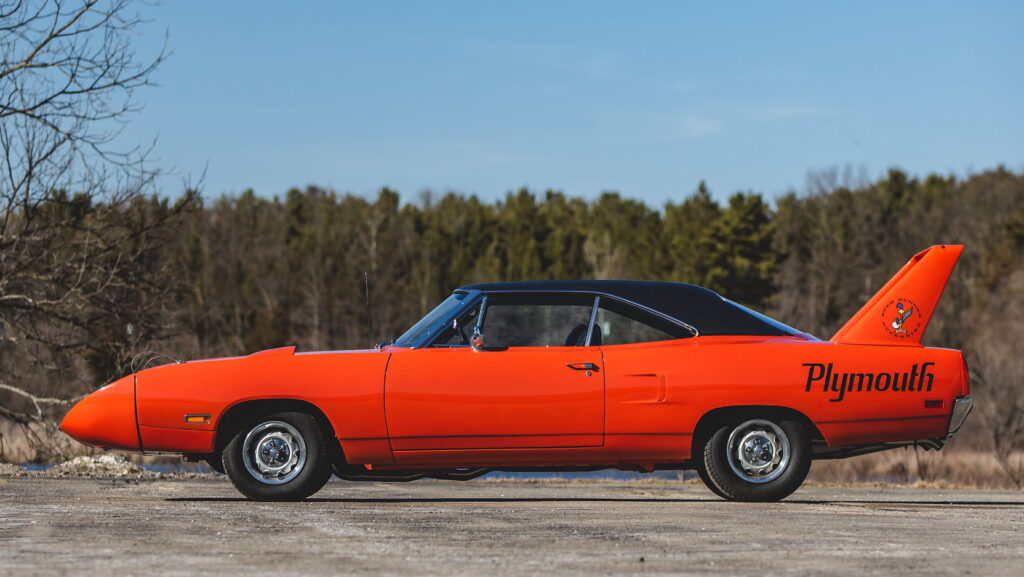
Let’s hop into the muscle car time machine and pit two winged warriors of the early 1970s against each other: the 1969-1970 Dodge Daytona and the 1970 Plymouth Superbird. These NASCAR-inspired beasts were built to dominate the racetrack and turn heads on the street, with their wild aerodynamics and fire-breathing V8s. While they share a family resemblance and a mission to win races, they’ve got distinct flavors that make them legends in their own right. Buckle up for a humorous, high-octane comparison of these Mopar icons, with a nod to their traffic-law-defying spirit—because let’s be real, no one drove these cars to obey speed limits.
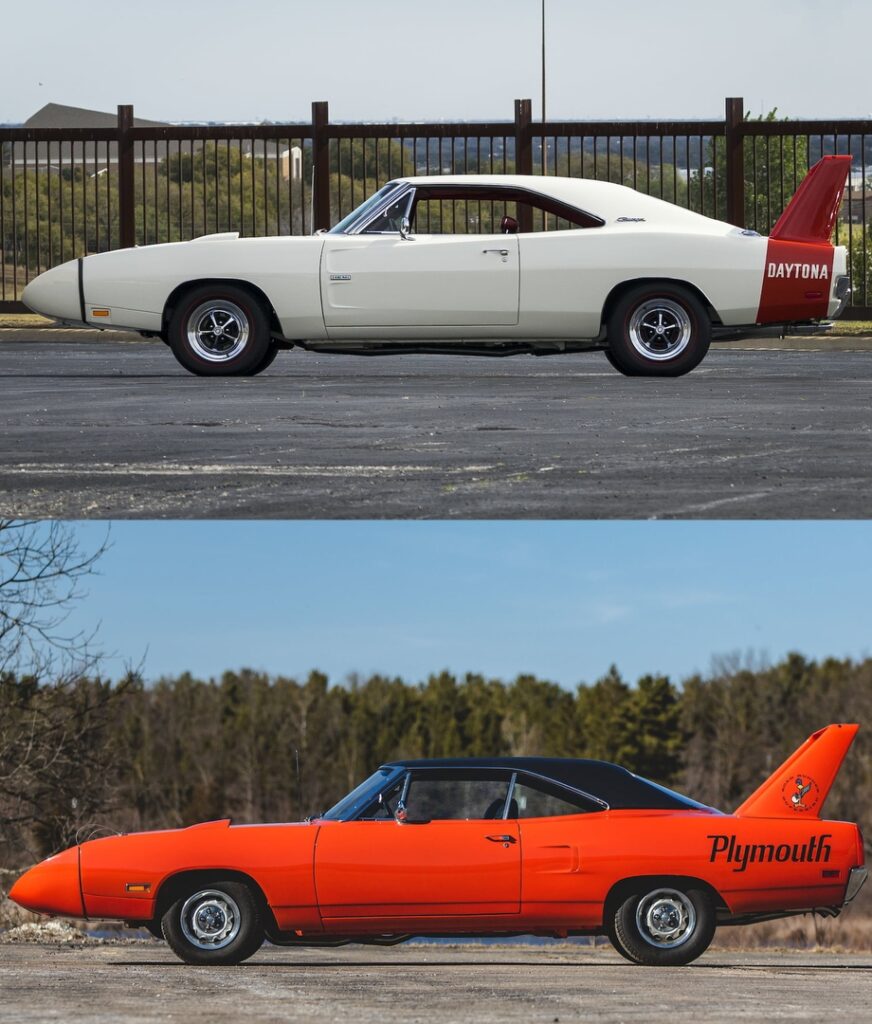
Origins and Purpose: Born to Fly on the Track
- Dodge Daytona (1969-1970): Dodge needed to keep up with Ford’s aero advantage in NASCAR, so they took the Charger 500, slapped on a pointy nose cone, and added a massive rear wing that looked like it was stolen from a jet. The result? A car that sliced through the air like a hot knife through butter, helping Dodge dominate tracks like Talladega. Only 503 were built in ’69 to meet NASCAR homologation rules, plus a few in ’70, making it rarer than a polite X comment section.
- Plymouth Superbird (1970): Plymouth saw Dodge’s Daytona and said, “Hold my STP sticker.” The Superbird was their answer, built on the Road Runner platform with a similar pointy nose and an even taller wing that screamed, “I’m here to win!” Plymouth had to crank out 1,920 units for homologation, so they’re slightly less rare but no less wild. Both cars were designed to cheat wind resistance, but they ended up stealing hearts instead.
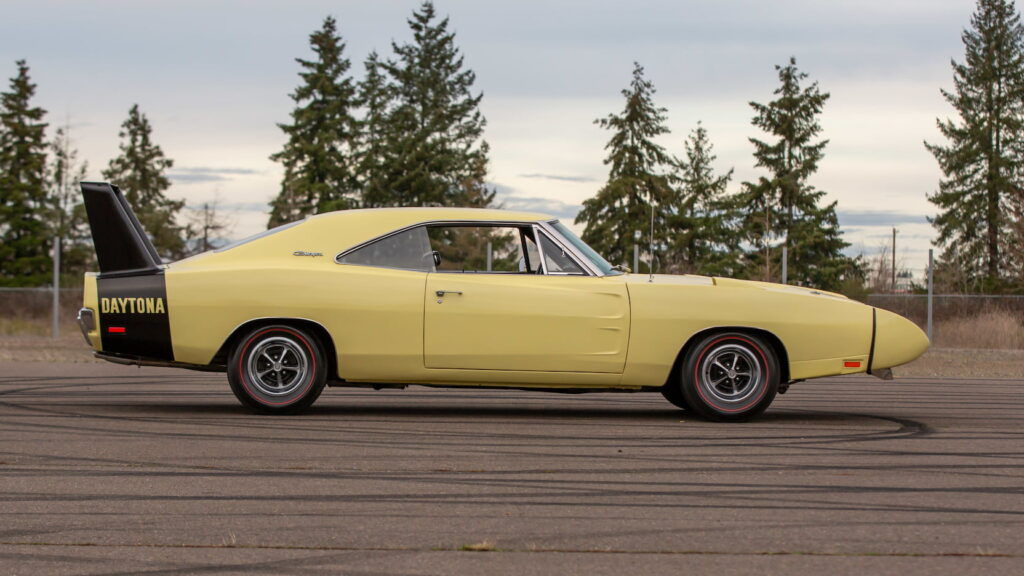
Winner: Tie. The Daytona came first and set the stage, but the Superbird upped the ante with bolder styling. Both were built to make NASCAR rivals cry, and they did—mission accomplished.
Design and Looks: Aero Insanity Meets Cartoon Cool
- Daytona: With its sleek, 18-inch nose cone and flush grille, the Daytona looks like a Charger that got a facelift from a rocket scientist. That 23-inch-tall rear wing, perched on aluminum struts, was functional but also pure theater—perfect for intimidating lesser cars at stoplights. Available in colors like Hemi Orange and Go Mango, it was subtle like a punch to the face. The hidden headlights and smooth lines gave it a slightly classier vibe than its Plymouth cousin.
- Superbird: If the Daytona was bold, the Superbird was downright unhinged. Its nose was sharper, its wing was taller (by an inch or two), and it came with a vinyl roof and a cartoon Road Runner decal on the wing struts, complete with a “beep beep” horn. Colors like Tor-Red and Lemon Twist made it look like it rolled out of a Looney Tunes episode. Dealerships sometimes struggled to sell these because, well, not everyone wanted a car that looked like it could take off. But today? It’s a collector’s dream.
Winner: Superbird. The Daytona’s sleek, but the Superbird’s over-the-top style—complete with that cartoon swagger—makes it the king of “what the heck is that?” reactions.Performance: Horsepower That Laughed at Speed Limits
- Daytona: You had two choices: the 440-cubic-inch (7.2L) Magnum V8 with 375 horsepower or the legendary 426 Hemi V8 with 425 horsepower (and probably 500 lb-ft of torque). Both were paired with a three-speed TorqueFlite automatic or a four-speed manual. The Daytona could hit 0-60 mph in about 5.5 seconds (Hemi) and top out at 150+ mph, thanks to its aero tweaks. On the track, it helped drivers like Bobby Isaac hit 200 mph at Talladega.
- Superbird: Same engine options as the Daytona—440 Magnum or 426 Hemi, with nearly identical performance. The Superbird’s slightly different body and wing gave it a hair better stability at high speeds, but we’re splitting hairs here. It was also a track monster, with Richard Petty’s #43 Superbird becoming a NASCAR legend. On the street, it could smoke just about anything, assuming you could afford the gas (8-10 mpg, anyone?).
Winner: Tie. Both cars had the same engines and similar performance. The Superbird’s wing might’ve given it a slight edge at 150 mph, but unless you’re racing on the Bonneville Salt Flats, it’s a dead heat.Street Cred and Traffic Law Consequences
- Daytona: Driving a Daytona was like waving a red flag at every cop in town. Its low production numbers (503 total) meant you were a unicorn on the road, but that nose and wing screamed, “Pull me over!” Reckless driving tickets were practically guaranteed if you unleashed all 425 horses. A speeding ticket could cost $50-$100 in 1970 (a chunk of change back then), and enough points could suspend your license for 30-90 days.
- Superbird: The Superbird was even more conspicuous, with that cartoonish wing begging for attention. Owners reported cops tailing them just to gawk. A reckless driving charge (say, for weaving through traffic to show off) could land you a $200 fine and 4-6 points on your license, depending on the state. Worse, some states treated these cars as “unsafe” due to their nose cones, leading to impound threats. Good luck explaining that wing to the judge.
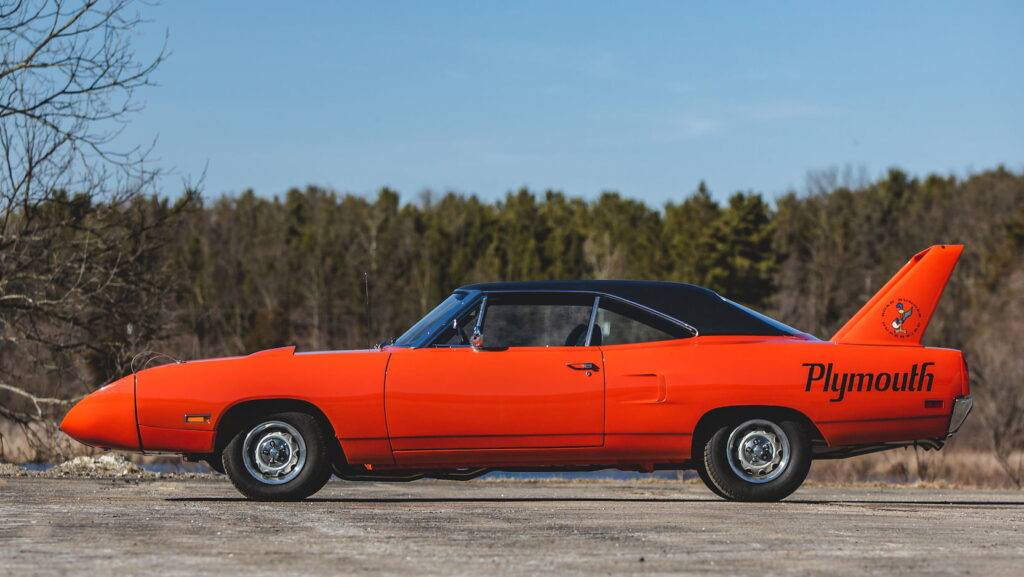
Winner: Daytona, barely. Its slightly less outrageous looks might’ve drawn a smidge less heat from the fuzz, but you were still asking for a ticket just by starting the engine.Collectibility and Legacy
- Daytona: With only 503 built, a Daytona in good condition is like finding a golden ticket. A Hemi Daytona sold for $1.32 million at auction in 2020, and even 440 models fetch $300,000-$500,000. Its rarity and sleek design make it a holy grail for Mopar collectors.
- Superbird: More were made (1,920), so they’re slightly less pricey—think $200,000-$400,000 for a 440 and $500,000-$900,000 for a Hemi. But the Superbird’s wild styling and Petty connection give it unmatched charisma. It’s the car you’d see in a museum with a “Do Not Touch” sign that you really want to ignore.
Winner: Daytona. Rarity wins here—503 vs. 1,920 is no contest—but the Superbird’s cult status makes it a close call.Final VerdictThe Dodge Daytona and Plymouth Superbird are like two siblings who both got the family’s good looks and bad attitude. The Daytona’s rarer and a touch more refined, perfect for the collector who wants understated (well, as understated as a winged muscle car can be). The Superbird, with its cartoonish flair and NASCAR swagger, is for those who want to steal the show at every car meet. Both laughed at fuel economy, speed limits, and subtlety, but their traffic law consequences were real—fines, points, and impound risks for anyone crazy enough to drive them like they were meant to be driven.If you’re picking one to cruise past a Waymo robotaxi in 2025, go Superbird for the sheer audacity. But if you’re stashing a classic in your garage for the grandkids, the Daytona’s rarity might edge it out. Either way, these winged wonders are proof that the ’70s knew how to build cars that were fast, loud, and gloriously impractical—just don’t expect to outrun Officer Karma. Beep beep!

